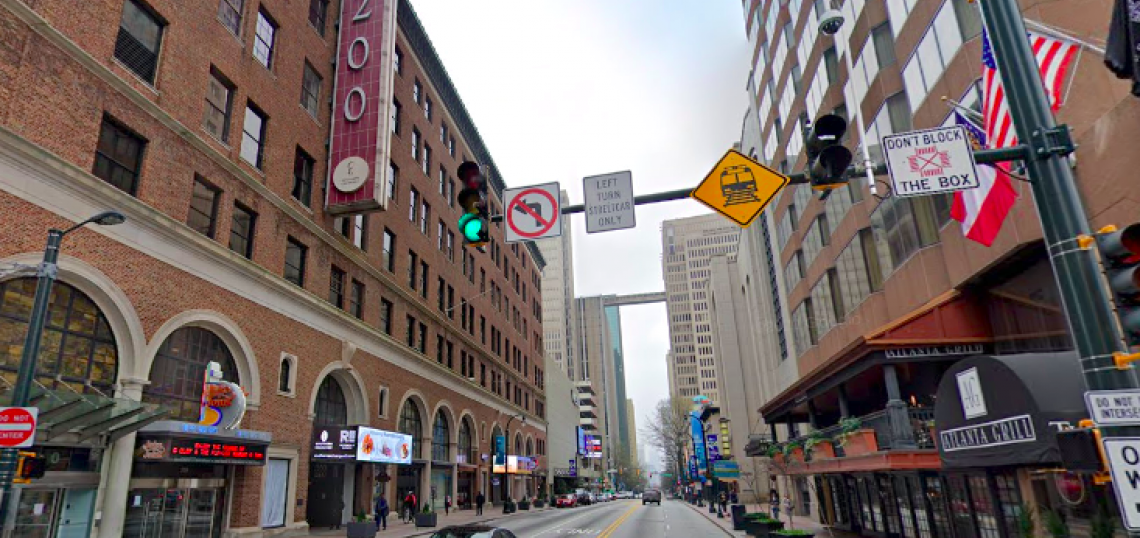A three-block experiment on downtown’s signature street could preview what’s in store for the City of Atlanta’s less auto-centric future.
That’s the word from Department of City Planning officials leading efforts this week to implement lane closures as part of the Peachtree Shared Demonstration Project. The initiative, which aims to safely blend pedestrian and vehicle uses on Peachtree Street, has been percolating in several forms for years. (Remember the Dutch-style “Woonerf” vision downtown?)
Phase 1 of the study began Tuesday, closing Peachtree lanes with low concrete barriers—or “wheel stops”—between Baker and Ellis streets. Paint striping, planters, and a new mid-block crossing to access Peachtree Center are also being installed.
 The scope of what's being implemented now as part of the Peachtree Shared Streets Study. Department of City Planning; Atlanta Design Studio
The scope of what's being implemented now as part of the Peachtree Shared Streets Study. Department of City Planning; Atlanta Design Studio
Building on an Atlanta City Studio concept from 2018, the study’s goal is to test and refine elements of shared space design before time and money is committed to more permanent changes. The intent is to open up traffic lanes for walking, biking, and mass transit as the main modes of transportation, while allowing vehicles to pass through in center lanes at much slower speeds.
Atlanta is following the lead of signature shared streets in London (Exhibition Road), Seattle (Bell Street), and other global cities.
 As a half-mile "main civic spine," London's Exhibition Road transformation could serve as a Peachtree template, according to Atlanta officials. Department of City Planning; Atlanta Design Studio
As a half-mile "main civic spine," London's Exhibition Road transformation could serve as a Peachtree template, according to Atlanta officials. Department of City Planning; Atlanta Design Studio
Tim Keane, Atlanta’s Commissioner of City Planning, believes the demonstration project will “give space back” to non-drivers and meet a need for more public spaces intown.
“As we experience a new wave of growth, we need Peachtree Street, and all of our public spaces, to be recreated as exceptionally designed places for all people every day,” Keane said in a prepared statement.
According to city officials, data will be collected during and after the demonstration project. That includes community input from an online survey that’s now live.
The finalized designs for a more democratic Peachtree are TBD. But a curbless street with special pavement (see the gallery), gathering spaces, minimal signage and road markings, and designated zones for pedestrians and all modes will likely be in the mix.
“This is just the beginning of a cultural shift of how we use public space in the city,” said Monique Forte, the planning department’s project manager for the study. “We want to test it to make tweaks along the way, so we can create a space that embodies the culture of our city and a beautiful experience for all of the users of this space.”
• Recent downtown news, discussion (Urbanize Atlanta)






